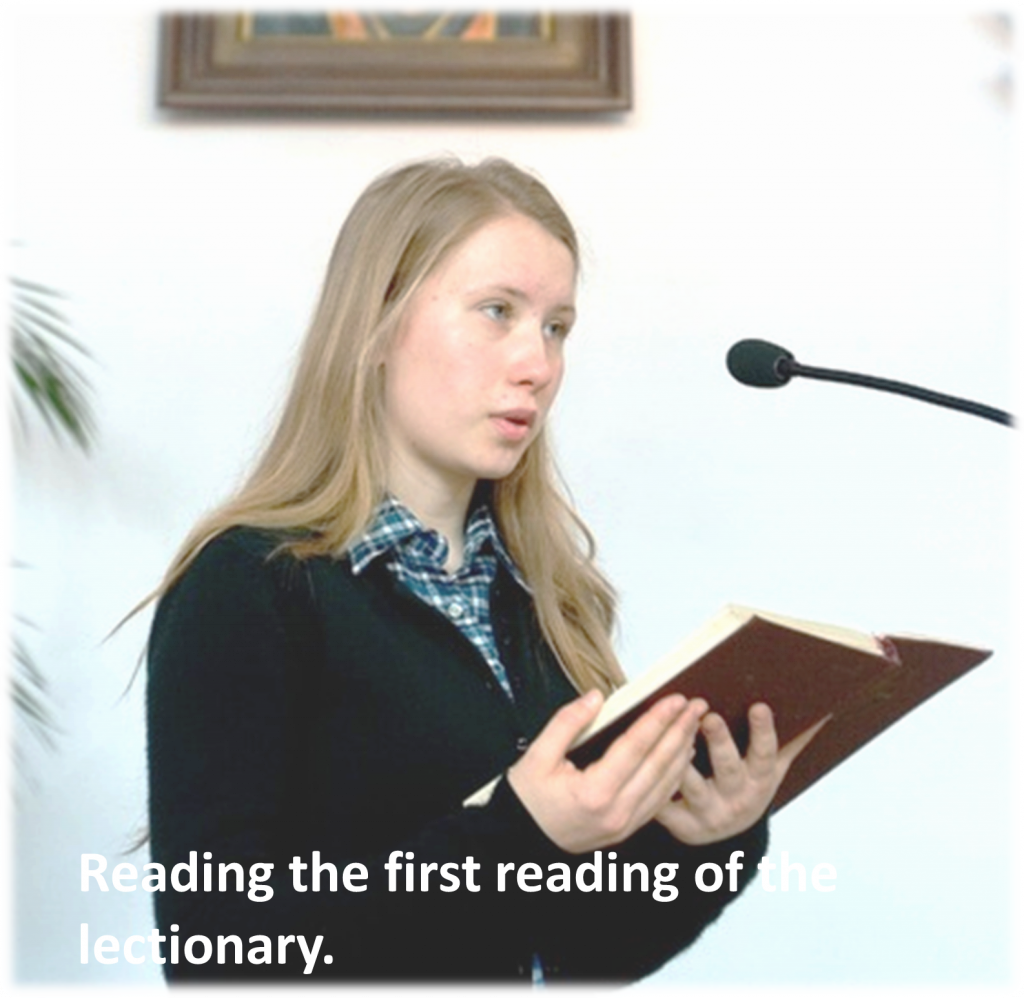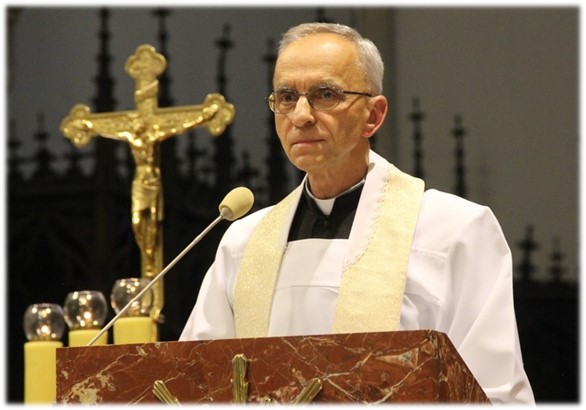. . . take and read

The main parts of the Mass are the Liturgy of the Word and the Eucharist. The Liturgy of the Word consists of the readings from Scripture, the homily, the Creed and the Prayers of the Faithful. The General Introduction to the Missal says that in the readings “God speaks to his people (. . .). Christ himself is present through his word amid the faithful” (55). Let’s look at how the Liturgy of the Word formed, how the bible reading was introduced into the liturgy of the Mass.
Let’s try to understand individual parts of Holy Mass.
The Holy Scriptures tell us that Jewish services were held in the synagogue on the Sabbath. Jesus Himself took part in them. Luke writes that Jesus read from the prophet Isaiah in the synagogue of Nazareth (4:16-19). The Jewish liturgy consisted of reading from the book of the law and book of the prophets; that is, of course the Old Testament. They also sang the psalms. The first Christians also took this order, adding the Gospel, which was proclaimed.
The Sunday Liturgy of the Word now contains two lessons, two readings: one from the Old Testament and one from the Epistles or Revelation of Saint John. The Gospels are read on a three-year cycle: in year A – the Gospel according to Matthew; in year B – Gospel according to Mark; in year B – the Gospel according to Luke; the Gospel according to John is read on solemnities and feast days. On weekdays the Gospels are read according to their own plan. The first reading is provided on a two-year cycle, i.e., the readings are repeated every two years.
After the first reading, the psalm is sung or recited, and after the second the Alleluia is sung with a verse that relates to the content of the Gospel text. If someone attended Holy Mass every day, they would hear half the Old Testament texts and the whole New Testament. In the homily the readings are explained and applied to life; the liturgy of the Holy Mass may also be explored as well as the mysteries of a particular feast presented. The homily is an integral part of the Liturgy of the Word.
Let’s now pay attention to the special features of the Mass’s Liturgy of the Word. Well, the structure has the character of a dialogue. What does this mean? The Liturgy of the Word in holy Mass is one great conversation between God and us. Let’s look. In the first reading God speaks to man, and man replies in the psalm; God speaks in the second reading and man greets Him joyfully singing “Alleluia”; God addresses us in the words of the Gospel and in the homily, and we confess our faith and direct our requests to Him in the form of the prayers of the faithful. Here God makes us His partner in a dialogue! God makes us partners in a conversation that saves us! What an honour!

Here we need to again refer to the exhortation of the “General Instruction of the Roman Missal” to celebrate the Liturgy of the Word in such a way as to “favour meditation”, that is, it fosters reflection. Brief moments of silence are indicated after the readings and after the homily, so that the Word of God may be “grasped by the heart and a response through prayer may be prepared” (56).
There’s an incident I’m going to tell you about that took place in Milan towards the end of the 4th century. Aurelius Augustine, professor of rhetoric, left his villa to go into the garden. It was a hot day. His head was also full of hot thoughts. He felt a far-reaching uncertainty because his philosophy of life had fallen apart. Then he heard the calls of children playing nearby: “Take and read. . . Take and read. . .” (tolle et lege). His eyes fell upon a Bible laying on the garden table. He opened it at the Letter to the Romans and read: “you know what hour it is, how it is full time now for you to wake from sleep” (13:11). These words fell deep into his heart. He goes to Saint Ambrose, bishop of Milan, to be prepared for baptism. “Take and read” – this word of God achieved a great change in him. He was, after all, a follower of the philosophy of Manichaeism, adversaries of Christianity and had long led a “playboy” life. We remember his mother Monica prayed over many years for his conversion. And here Augustine becomes one of the greatest saints in the history of the Church! “Take and read” – this exhortation is directed to each of us. Let’s take the Bible into our hands often and “read” the words of life from it. It would be good to read the Sunday’s readings on Saturday, especially the Gospel. The point being on Sunday to open ourselves more deeply to the Word of God directed to us in Mass so that it may transform our hearts. And this transformation we need continuously!